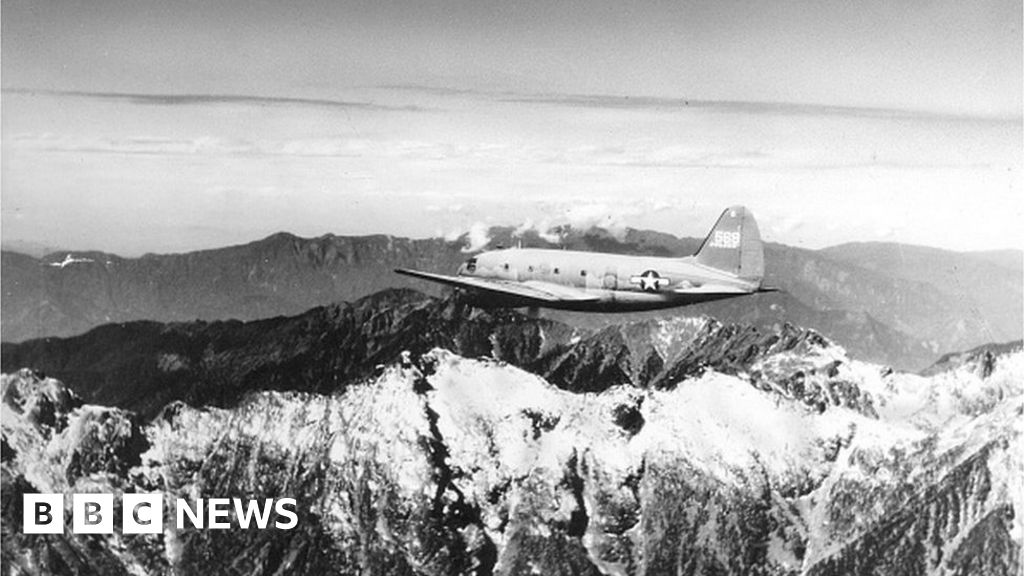Dejan Corovic
As above, so bellow
I don't understand why there is no horizontal wing on the tail. That would make the structure more rigid. This way all the load is on the mid-span wing.

Yeah, but they move fast, hard to find in ocean's expanse.I can't help but wonder if carriers will go the way of battleships. Awfully big targets no matter how well defended.



Bob Pardo, Vietnam War pilot famous for Pardo’s Push maneuver, dies at 89
Bob Pardo, Vietnam War pilot famous for Pardo’s Push maneuver, dies at 89
By
JONATHAN SNYDER
STARS AND STRIPES • December 13, 2023

Retired Air Force Lt. Col. Robert Pardo is known for carrying out an unorthodox aviation maneuver, later coined the Pardo Push, to save the lives of his wingmen during a bombing mission over Vietnam on March 10, 1967. (David Cooper/U.S. Air Force)
Bob Pardo, who left his mark in Air Force history for using an unorthodox maneuver, Pardo’s Push, to save his wingmen’s lives during a bombing mission over Vietnam, died Dec. 5. He was 89.
On March 10, 1967, Pardo and weapons officer 1st Lt. Steve Wayne were on a bombing run on an enemy steel mill north of Hanoi in an F-4C Phantom, flying alongside Capt. Earl Aman and 1st Lt. Robert Houghton.
The target — North Vietnam’s only steel mill dedicated to war materiel — was heavily guarded by anti-aircraft guns and artillery.
During the mission, ground fire damaged both Pardo’s and Aman’s Phantoms, causing both to lose fuel. However, Aman lost too much to return safely to base, and Pardo knew he had to act quickly, according to a 2007 recounting of the mission by Gen. T. Michael Mosely, then the chief of staff of the Air Force.
“I knew if I didn’t do anything, they would have to eject over North Vietnam into enemy territory, and that would have resulted in their capture for sure,” Pardo said in a 2015 interview for the Air Force Veterans in Blue program. “At that time, if you were captured by civilians, you were probably going to be murdered on the spot.”
Pardo decided to push Aman’s plane using the nose of his aircraft against Aman’s tailhook, a retractable hook on the underside of the plane used for arrested landings.
He managed to decrease the rate of descent of Aman’s jet by 1,500 feet per minute, and they successfully reached friendly territory. Both air crews safely ejected over the Laotian border and were rescued by friendly forces.

Retired Air Force Lt. Col. Robert Pardo died Dec. 5 at 89. (David Cooper/U.S. Air Force)
The Air Force at first reprimanded Pardo for further damaging his aircraft. Twenty years later, he received the Silver Star for his actions in the aerial rescue.
Pardo was born in 1934 in Herne, Texas, and began his Air Force career in 1954 at age 19. After flight school, he flew the Phantom during the Vietnam War, logging 132 flying missions.
He retired as a lieutenant colonel in 1974. In addition to the Silver Star, his awards include the Distinguished Flying Cross with Oak Leaf Cluster, Purple Heart, Air Medal with twelve Oak Leaf Clusters and the Meritorious Service Medal.
Pardo is survived by his wife, Kathryn, whom he married on March 7, 1992, five children and 10 grandchildren.
View: https://youtu.be/RRNbcPS3A9c?t=40
And then they say AI can replace peopleNever even heard of it until now. Amazing
